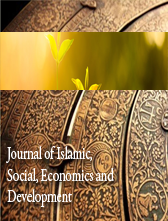EFFECT OF DIFFERENT STRETCHING ACTIVITIES ON 1- REPETITION MAXIMUM PREDICTION LOADS AMONG UNTRAINED YOUNG ADULT
Abstract
Stretching is one of the components for warm-up. However, static, and dynamic stretching was applied based on different principles. Thus, stretching activities might affect 1- Repetition Maximum (1RM) prediction load. The study aimed to investigate the effect of static and dynamic stretching on the 1RM load identified using the 1RM prediction equation. A total of a forty-four-university student involved in this study. Initially, the subject’s 1RM load was determined using the leg and bench press. Next, subjects performed either static or dynamic stretching at a random sequence, before performing repetition to fatigue (RTF) using 80% of identified 1RM load using leg press. All 1RM evaluation was being conducted separately within 72 hours. There are seven 1RM equations used to predict the subjects’ 1RM load. The 1RM predicted load are found to be lower than 1RM actual load (Mean=103.86) after performing static (Mean= 99.5 kg) and dynamic stretching (mean=99.09kg). There is a significant difference between the Actual 1RM load and predicted load after static and dynamic stretching as calculated using Brzycki and O’Conner equations. Overall, both static and dynamic stretching does influence the 1RM load prediction among untrained young adult when evaluated using leg press.













